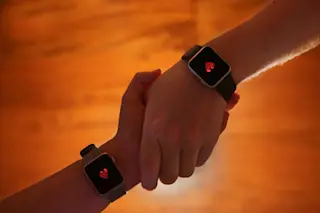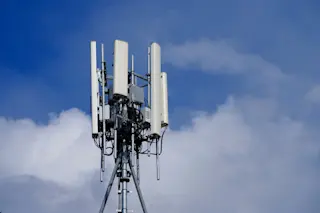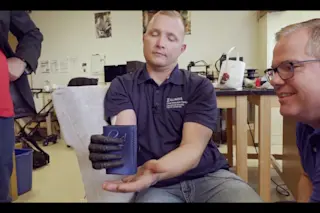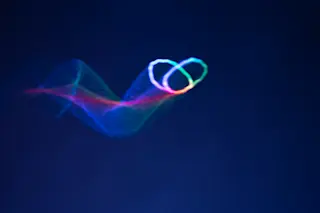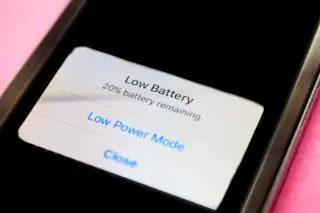To track ocean storms and dangerous waves, the Navy uses radar data from satellites that estimate wind speed and wave height. But accurate measurements of wave heights from space are difficult to make, and wave height in itself tells nothing about how violently waves are breaking on the ocean surface. Andrew Jessup, an oceanographer at the University of Washington, has developed a way to improve on, or at least augment, radar images. Shown here are infrared photos of the wake of a breaking wave. (Black-and-white photographs of the same wave are on the left.) The photos were taken by an infrared camera aboard a research vessel off southern California. Jessup wrote a computer program that uses images from standard infrared cameras to analyze temperature changes in the top layer of the oceans’ waters caused by breaking waves. Since the surface is a few tenths of a degree cooler than the water below, when a wave breaks, the warmer water beneath (orange and red) mixes with the cooler water above (blue and violet). The most powerful waves create the most mixing, so the images could be used to warn mariners away from choppy seas. Next summer Jessup plans to analyze infrared images of the ocean taken from a NASA satellite.
Breaking Waves
Discover how ocean storms and dangerous waves are tracked using innovative radar data from satellites for better safety at sea.
More on Discover
Stay Curious
SubscribeTo The Magazine
Save up to 40% off the cover price when you subscribe to Discover magazine.
Subscribe


